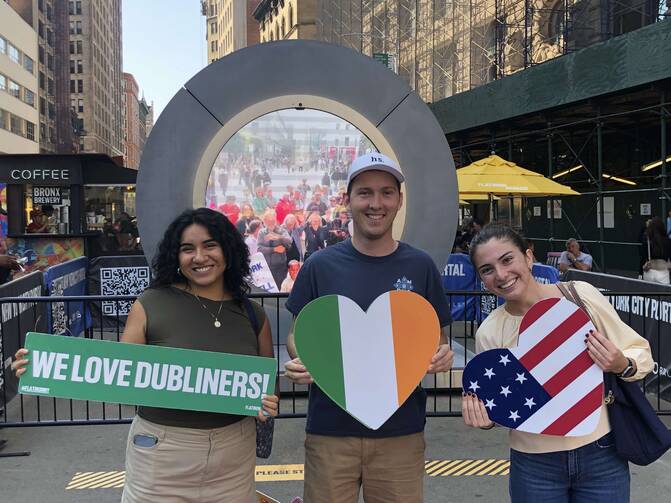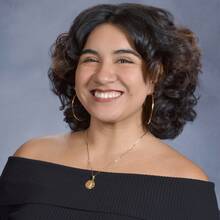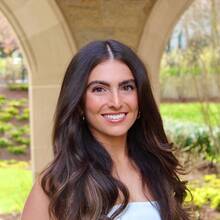It squats in a small plaza in the Flatiron District in Manhattan. Just short of a dozen feet in diameter, it weighs around 3.5 tons. It looks from a distance like a gigantic mirror. But when you peer into The Portal in New York City, you don’t see yourself: You see residents of Dublin, Ireland. And they can see you.
The Portal, an interactive installation designed by the Lithuanian artist Benediktas Gylys, allows people in New York and Dublin to interact with each other using two live streaming video screens, one in a central location of each city. It debuted in New York and Dublin in May of this year. On this side of the pond, the installation sits outside the historic Flatiron Building. In Dublin, it is near O’Connell Street, one of Dublin’s busiest thoroughfares.
The Portal was a big hit from the beginning, drawing tens of thousands of visitors at both ends in its first week and creating a lot of buzz around the social media images of Americans and Irish smiling and waving to one another from an ocean away. Alas, it then had to be shut down for a bit, because…well, it didn’t bring out the best in either country’s citizenry.
A few Americans thought it would be funny to flash their Irish counterparts, and another shared a photo of a potato; on the Dublin end, a man mooned the Portal, and another showed a photo of the Sept. 11, 2001, attacks on the Twin Towers in New York.
When the Portal opened, it was intended to be a 24/7 experience at both ends. However, after that rough first week, it has operated with limited hours (currently 8 a.m. to 3 p.m. on the New York City side) and with a security guard present at all times. The Portal (at least in its current location) is closing permanently on Sept. 2, 2024.
America’s three new Joseph A. O’Hare fellows, Leilani Fuentes, Connor Hartigan and Grace Lenahan, visited New York City’s half of the Portal on Friday, Aug. 23. Their reflections—and some images of the day—are below.
Leilani Fuentes
As a new resident of the city that never sleeps, I am easily taken by the technology and shiny bright lights that seem to materialize on every corner of New York City. Standing before the Portal was no different.
When we arrived at the art installation on a sunny Friday morning, the Portal appeared to fit right in with the rest of the busy streets. It is as unassuming as a large circular installation with a live-streaming screen can be, and the less-than-ideal video quality is almost comforting. But as we mustered up the courage to engage with people on the other side, I quickly got a sense of how awkward the whole interaction was about to become.
The screen only showed us a video broadcast of our Dublin counterparts, with no sound. I was also unsettled by not being visible to myself, especially after spending years stealing glances at my own Zoom camera reflection over the course of my undergraduate career. Whether or not this reveals more about my own self-centeredness than about our human nature, we were all ultimately left waving our arms around, dancing and otherwise signaling in hopes of having our gestures reciprocated.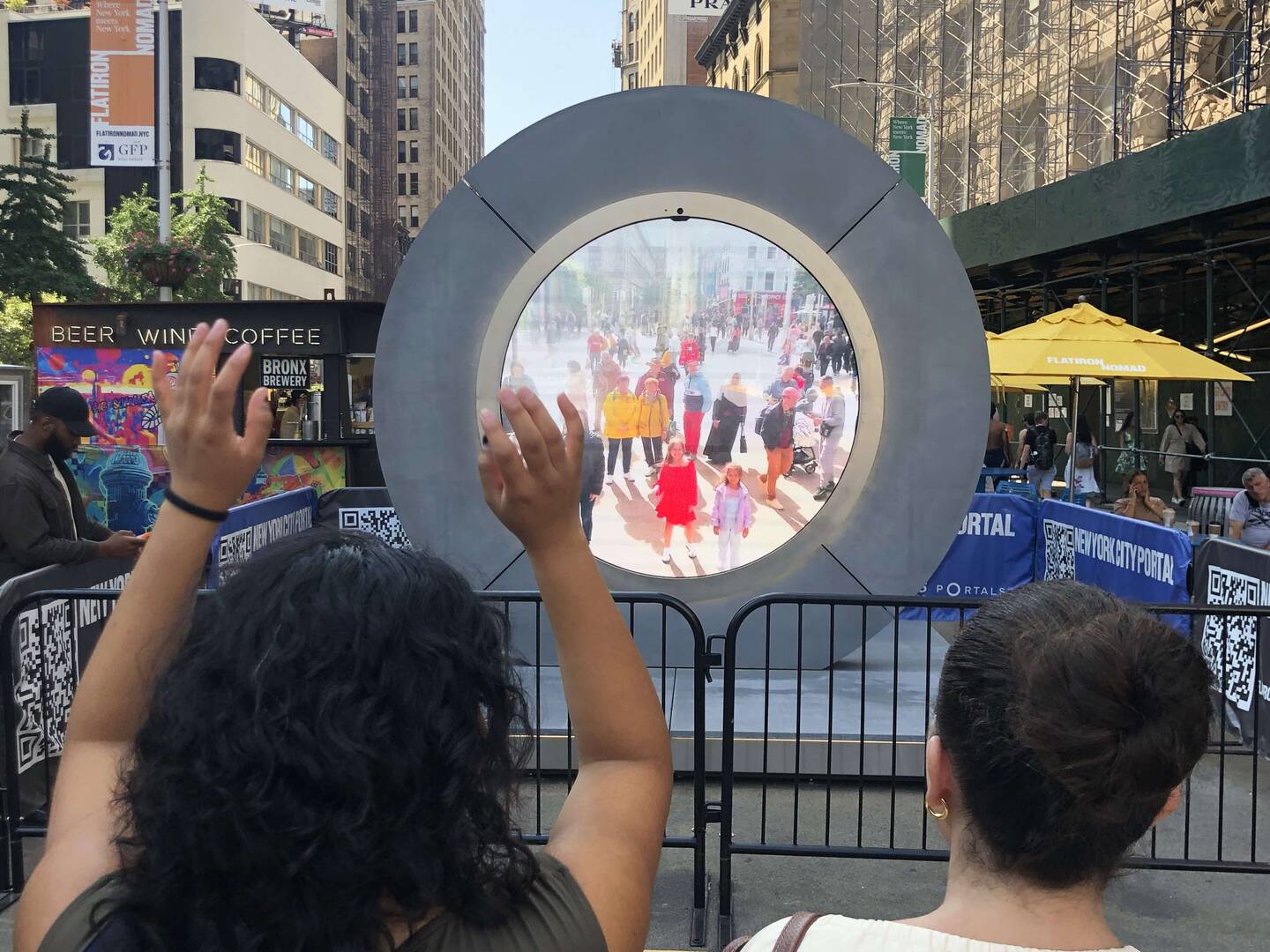
As a colleague and I attempted the “Apple” Charli XCX TikTok dance trend in tandem with our new on-screen friends, I realized the only way this installation works is if both sides are willing to see and respond. To understand the flailing gestures of the other side is to utilize the technology at hand to return said gestures; reciprocity is what makes the experience worthwhile.
Another thing struck me amid another round of dancing: the spiritual essence of the moment. The aptly titled artwork invites all participants to gaze and be gazed at, bringing out a childlike wonder and awkward, bashful smiles from both sides of the screen. We are for a brief moment transported into each other’s worlds.
God similarly calls us to see each other as brothers and sisters, and we can further utilize our faith as a “portal” into better understanding each other, transcending other forms of communication. A returned wave or mirrored gesture is validation of being seen, and the Portal asks us to reflect on how we are today utilizing new technologies to form human connection.
As I began to write this reflection a few hours after our experience of the Portal, “Apple” by Charli xcx played at the cafe where I sat writing. I wondered if our new Dubliner friends were listening along, too.
Connor Hartigan
For years I have had a peculiar penchant for the most tragic Irish songs about emigration. With precious little documentation about my ancestors who left Ireland for Brooklyn, I often find a connection with them through these songs. From the heartbreaking “Donegal Rain” to the haunting “Skibbereen,” this music functions for me as a portal across nearly two centuries, giving me a glimpse of the travails and hopes of my forebears from Limerick and Derry.
While there is far more to Irish heritage and culture than its tribulations, the experience of these emigrants was overwhelmingly defined by suffering and persecution; James Joyce would later refer to the Atlantic Ocean separating Ireland from its diaspora as a “bowl of bitter tears.”
It was thus somewhat surreal to stand on the corner of Fifth Avenue and 23rd Street in New York City, smiling and waving warmly to passersby on O’Connell Street in Dublin. Children in both cities ran up to the camera and imitated each other’s performances of TikTok dances. People held up signs: “We love Dubliners!” “Hey New York, you’re looking well!” I was enjoying myself, but the moment was poignant. Never mind the concept of live video—would this sort of joy have been imaginable to my ancestors on the day they laid eyes on Ireland’s shores for the last time? What would the millions of Irish exiles to America, most of whom never saw Ireland or their families again, have made of the experience?
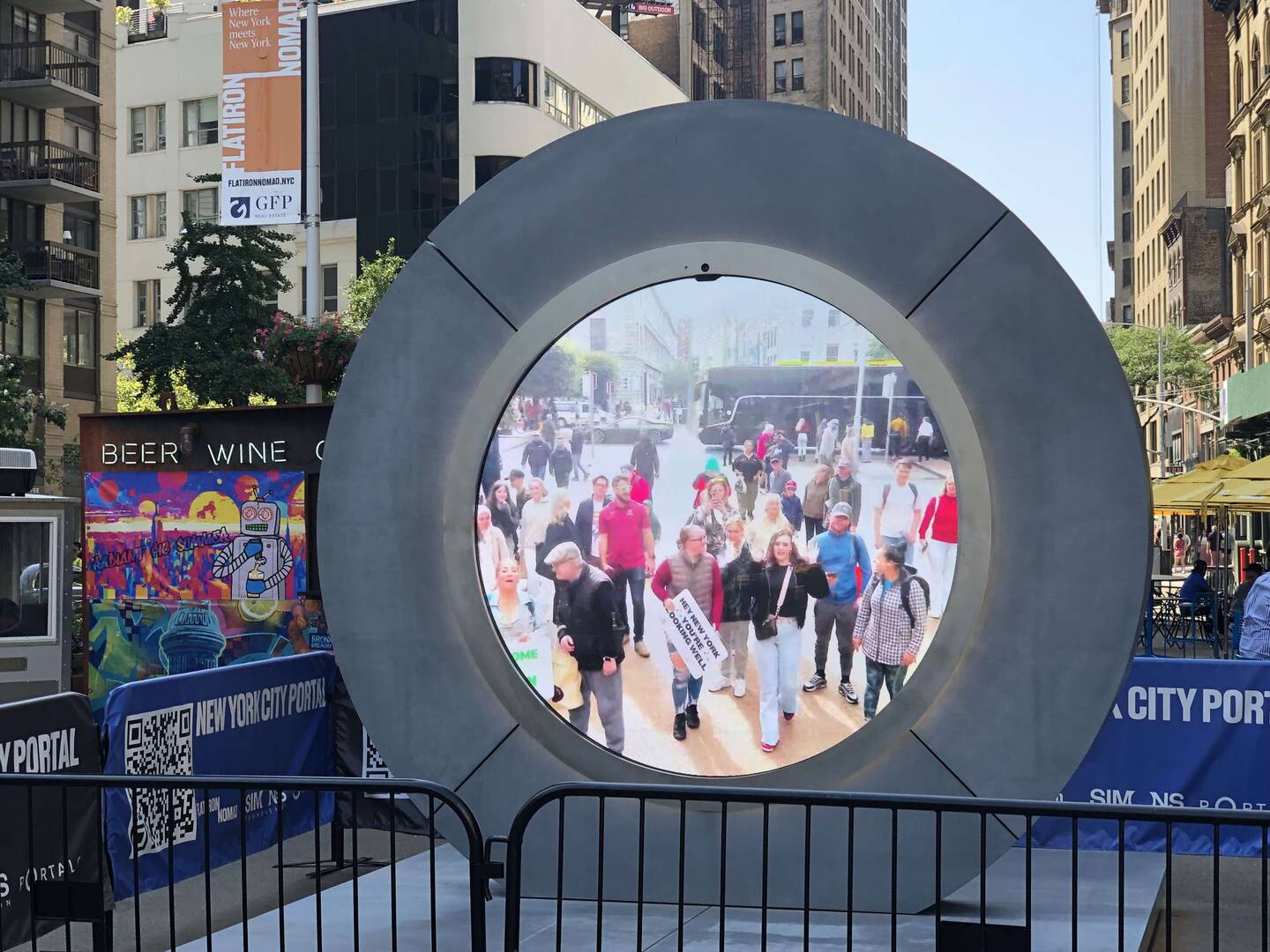 Yet our visit gave me hope. The Irish-American past may be marred by famine and colonial rule, but the Portal is a microcosm of the extraordinary progress that humanity has made. While the sea separating Ireland and America was once a bowl of bitter tears, a nigh-infinite chasm across which millions of starving and impoverished people fled, never to return, the gulf is now bridgeable through a screen.
Yet our visit gave me hope. The Irish-American past may be marred by famine and colonial rule, but the Portal is a microcosm of the extraordinary progress that humanity has made. While the sea separating Ireland and America was once a bowl of bitter tears, a nigh-infinite chasm across which millions of starving and impoverished people fled, never to return, the gulf is now bridgeable through a screen.
The stunning technological innovations that made the Portal possible also gave me a newfound appreciation for the unity of humankind. We smiled and laughed together across boundaries of nationality, ethnicity and language. In both cities, the crowds that gathered in front of the cameras were full of every type of diversity imaginable—racial, religious and more. What better answer to contemporary currents of prejudice and xenophobia than this?
As we left, a line from “Donegal Rain” echoed through my mind: “Dark may seem our lives’ December, time will bring to us the May.” I pray that we might leave the dark December of bigotry, oppression and suffering in the past, and walk forward into the May for which my Irish ancestors longed: a May of abundant bounty, shared joys and lasting peace.
Grace Lenahan
This past Friday, I joined a giant FaceTime call with 40 Irish strangers. I went home that afternoon with ample evidence that the kingdom of heaven is really a kindergarten.
As the sun cut through the clouds on our long pre-weekend lunch break, Leilani, Connor and I (the new O’Hares on the block) walked for a mile and a half to the Flatiron Building to see the Portal, a buzzy art installation that had been widely marketed as an interactive visual display bridging two global cities, Dublin and New York, to facilitate cultural connection. We heard about it on TikTok.
Strolling as the sun soaked us, we joked about New York’s “summer stink” and shared gratitude for this chance to live out our dreams as writers for an entire year.
We remained oblivious to the Portal’s secrets.
Before my arrival, I had imagined the Portal as a porthole: a little looking glass the size of a handheld mirror. I thought it was designed to delight distracted New Yorkers on their daily commutes to work:
Attention, monsieur! Take a petite pause and observe Dublin’s iconic O’Connell Street, packed with colorful Irish pedestrians of all ages, shapes and sizes! Better yet, they can see you too! Talk to each other. Connect! Fall in love!
I did not expect to find a huge metallic circle, four meters high and three tons heavy, towering like a behemoth of technological innovation before me. I reacted in the way I imagine the first Americans had reacted to the Model T Ford when it was rolled out in 1908. “Whoaaa. What on earth is that? That’s sooooooooo cool.”
Because it was. The Portal was huge and funny. Irish parents hoisted Irish babies holding American flags. I couldn’t help but notice that the “American” signs for use on our side included a hot dog, a slice of pizza, a baseball, a football and a mini Lady Liberty. Hello Ireland. We have sports and statues. Is anyone hungry?
Here’s the catch: We couldn’t talk to each other. We had to go beyond words, and the portal forced us to be friends before we could call ourselves strangers. Soon it became clear to me that only children knew how to do this.
So I took notes. I made a heart with my hands after a young girl in a red pinafore dress made a heart with hers. We played rock-paper-scissors. American and Irish kids waved at each other. They danced. I danced.
I was reminded of a moment at America from a few weeks ago. As we piled into the office chapel for Mass on my first day of work, the priest read a passage from Mt 18:3: “Truly, I say to you, unless you turn and become like children, you will never enter the kingdom of heaven.”
The kingdom of heaven is a kindergarten, and the playground rules are simple: encounter, be curious and be delighted.

